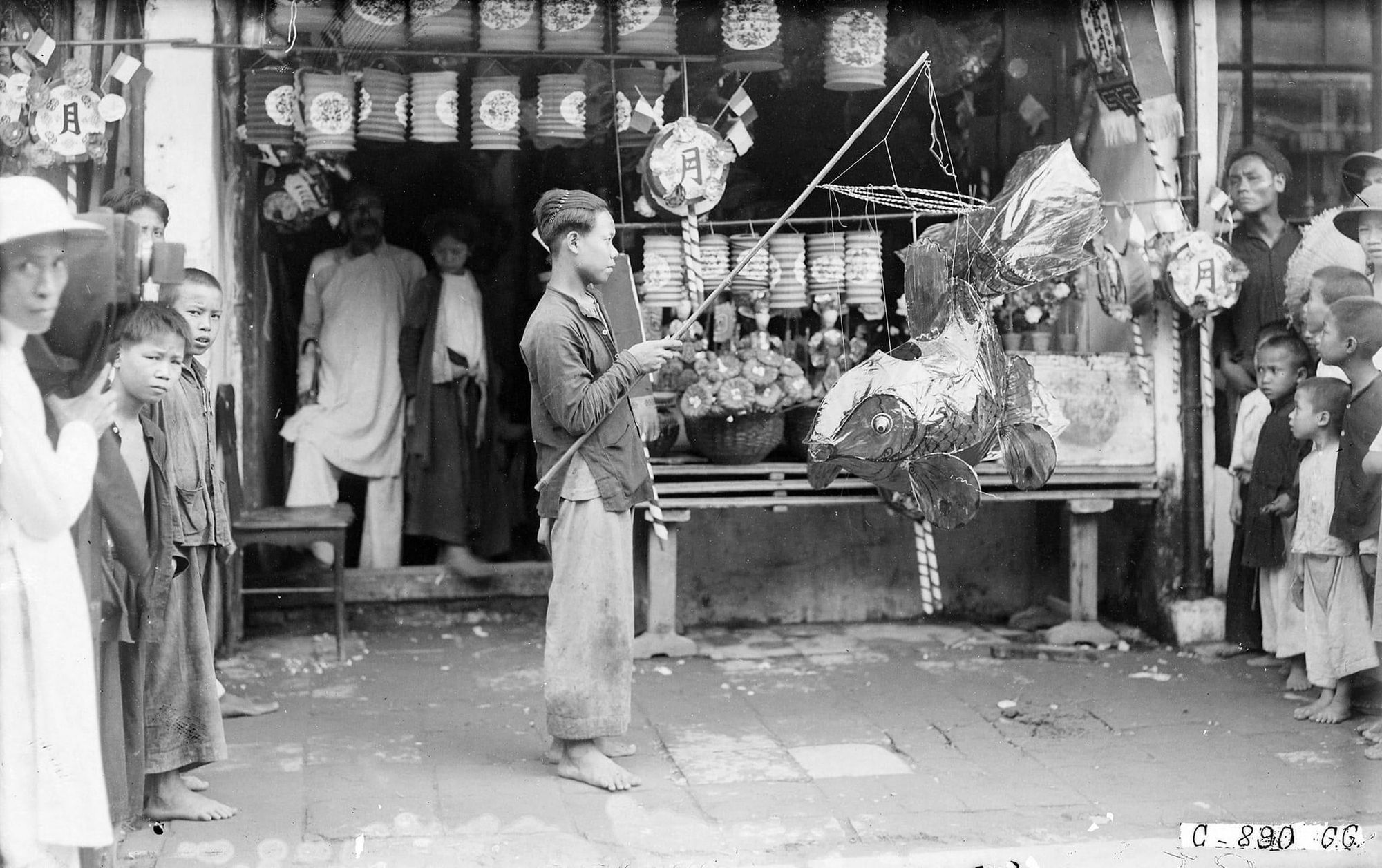No signpost, no welcoming gate like most preserved heritage craft villages in Vietnam, Phu Binh lantern hamlet sits quietly beside a wet market in what was once District 11 of Saigon.
By the mid-1950s, the Vietnamese art of Mid-Autumn lanterns was fading under political upheavals in the North. Families from Bao Dap, a famed lantern-making village in Nam Dinh, migrated south and founded Phu Binh hamlet in Saigon, now part of Tan Phu District, where the craft endured. For more than half a century, nearly every Mid-Autumn lantern in Saigon and across southern provinces has been born from this modest hamlet.
“If Bat Trang is known for ceramics, and Van Phuc for silk, then Bao Dap is remembered for Mid-Autumn lanterns,” cultural researcher Trinh Bach observes.
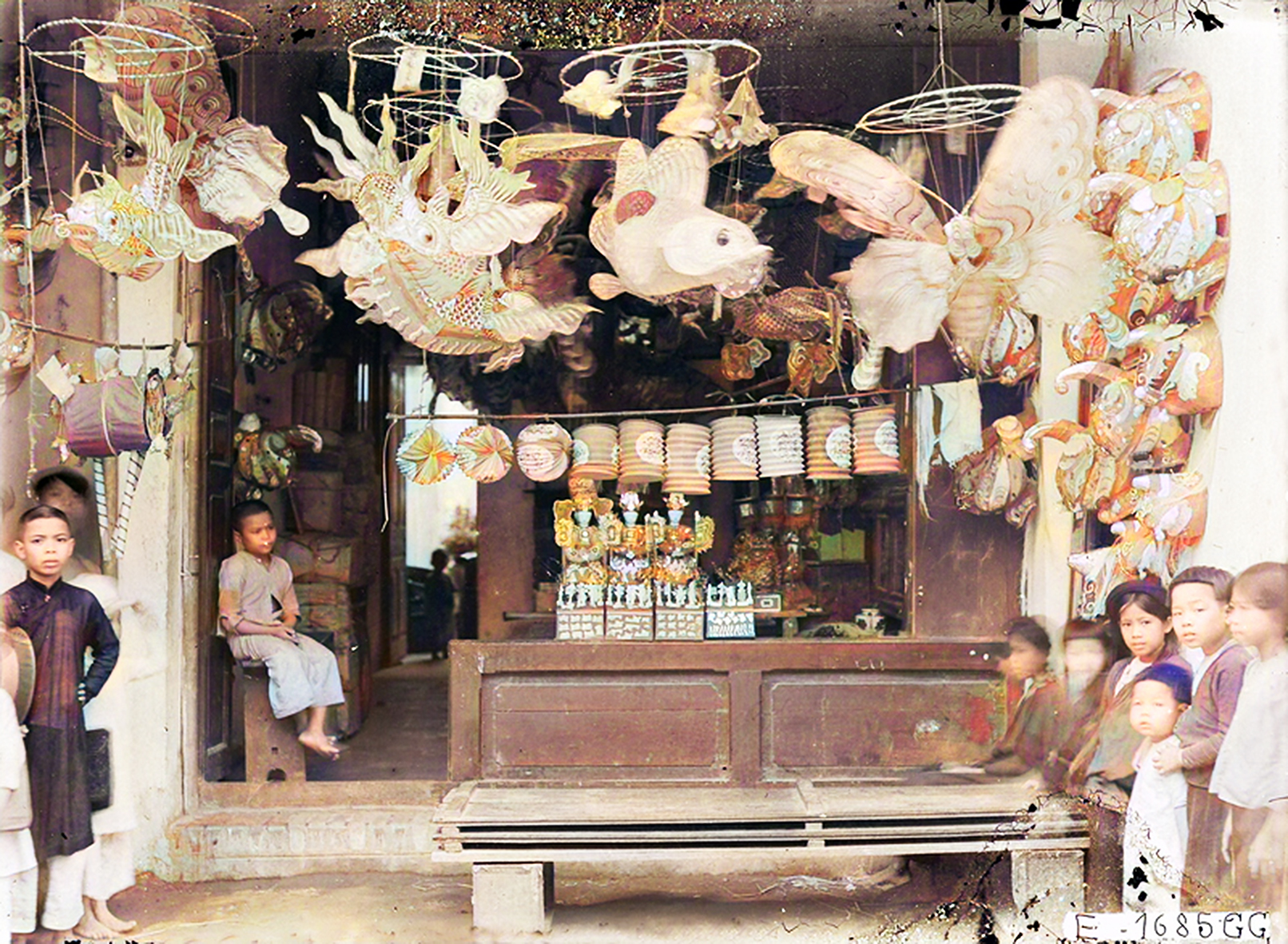
Five days before the Mid-Autumn Festival of 2025, I met Nguyen Trong Binh, a third-generation artisan of Bao Dap village. At 48, he has devoted four decades to the craft. His eyes are swollen from lack of sleep. These past two weeks, he has managed no more than two hours a night. Specks of paint still cling to his hands. As we speak, he bends over a lantern with steady care, finishing it in time to be sent off for the season’s celebrations.
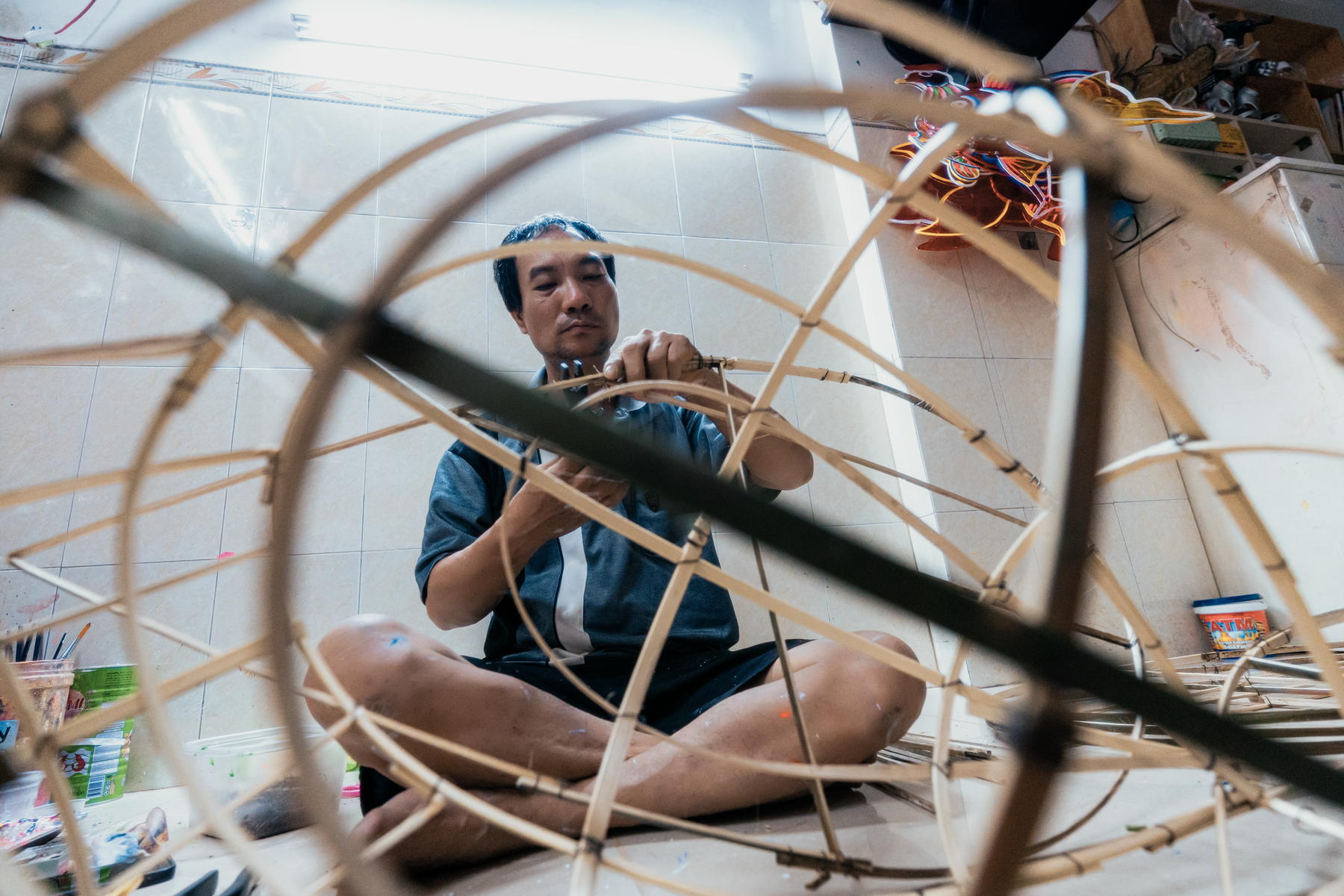
In its golden days, Phu Binh lantern hamlet was home to hundreds of households crafting lanterns. Today, in that same narrow alley of the old District 11, Binh’s workshop, also his family home, sits quietly among grocery stalls and rice shops. The neighbors who once shared this livelihood have long abandoned the craft. To be exact, they could no longer live on it: their children chose other paths, and the elders aged out of labor.
Each Mid-Autumn lantern, priced from 10,000 to 70,000 Vietnam dong (0.41 USD to 2.86 USD), prompts an inevitable question: when the festival ends, how does a family survive?
This craft was never meant for profit. Occasionally, large-scale lantern commissions bring higher sums from 5 to 7 million Vietnam dong (200 USD to 250 USD). But the costs are heavy: wages, materials, and months of meticulous labor, where even the smallest error in framing or painting can mean starting over entirely.
Yet Binh never speaks of complaint. What keeps him bound to the craft is love, devotion, and discipline. “The love for the art of lantern making has long been in my blood,” the third-generation artisan confides.
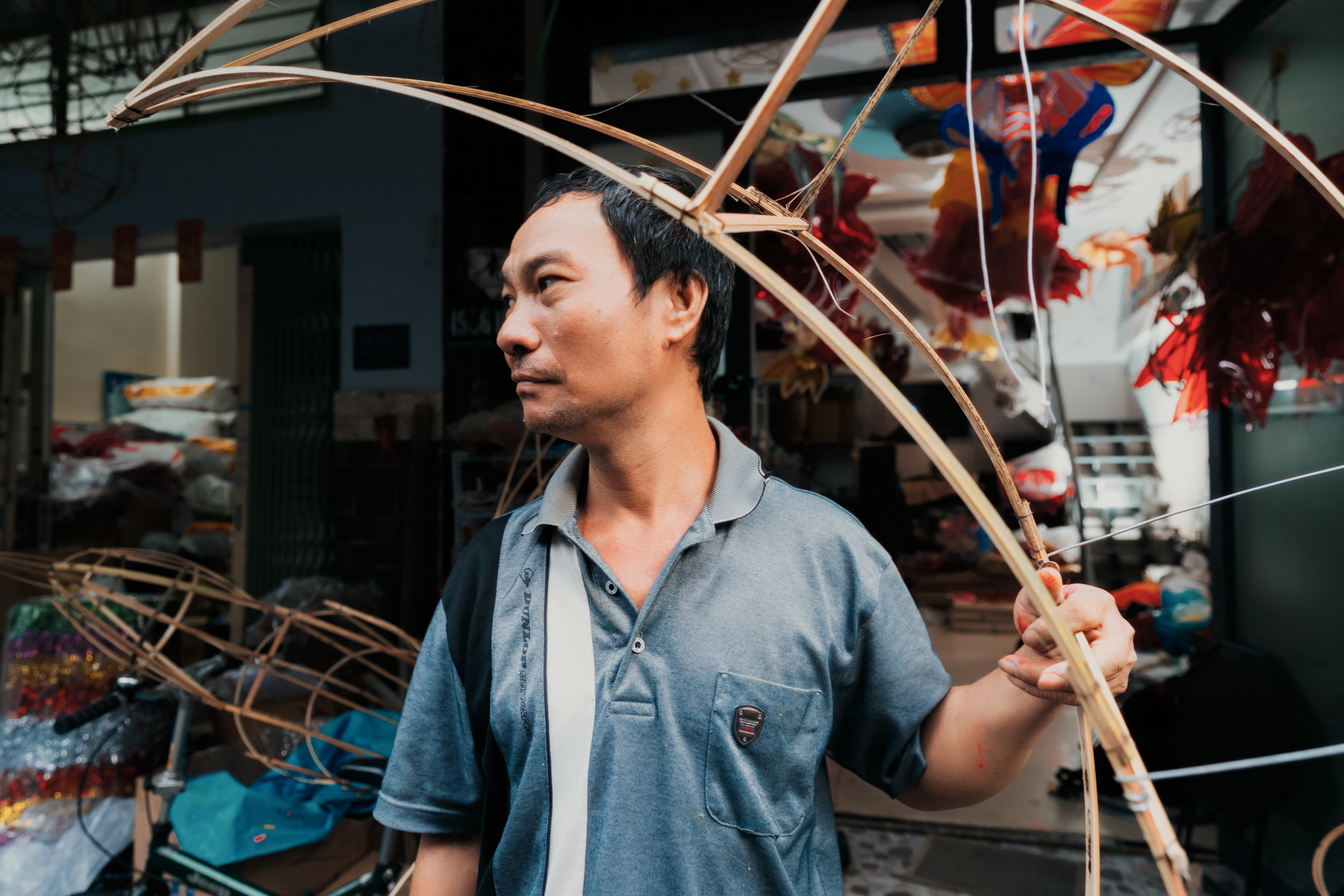
More importantly, this third-generation artisan of Bao Dap village now holds the complete knowledge of Vietnam’s traditional Mid-Autumn lantern craft, once thought to be lost.
Eight years ago, a chance encounter with cultural researcher Trinh Bach drew him into the work of restoration.
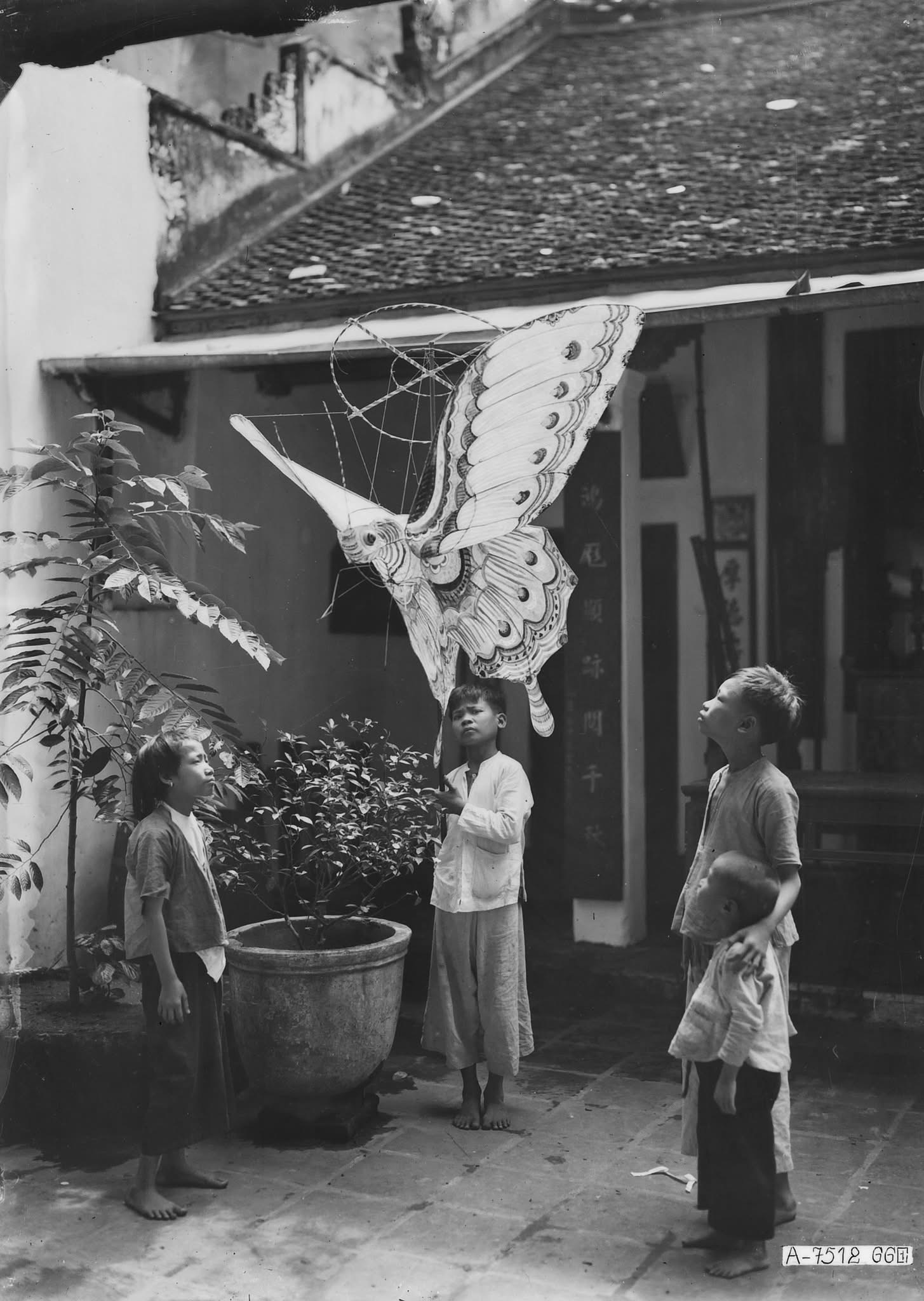
The early years were arduous. From faded, dust-stained archival photographs, Binh reconstructed lanterns piece by piece. “If I made a mistake, I threw it out. Again and again, for three years straight,” he recalls his first successful restoration.
But those three years, for him, were filled with joy. “I want to preserve the cultural traces left by our ancestors. Without reconstruction, all of those old lanterns would simply be forgotten. I want to bring them back to life, so that today’s children can see what existed a hundred years ago.” Though he has spent his life as a lantern maker, Binh had never seen an antique Mid-Autumn lantern—until he brought them to life with his own hands.
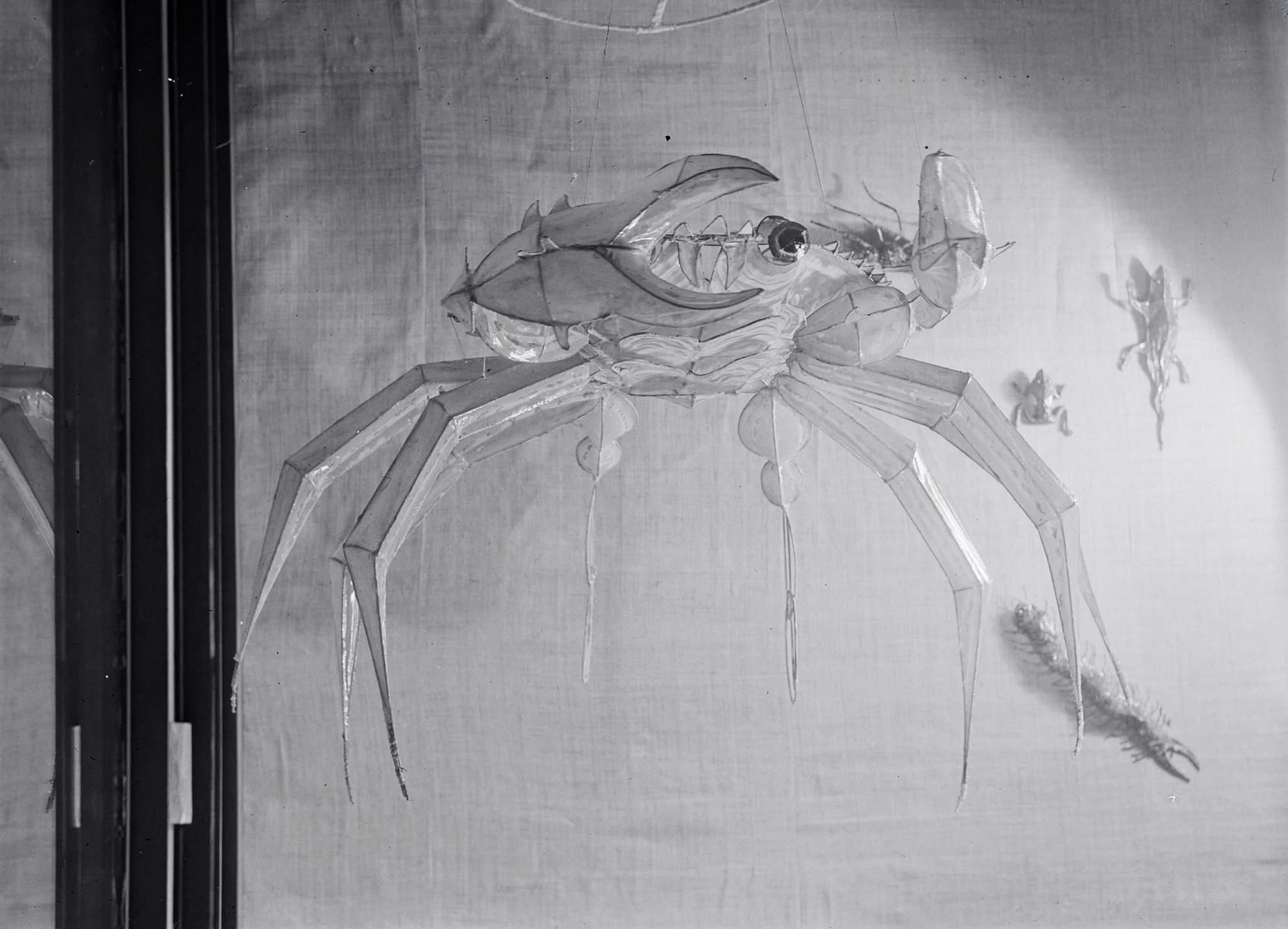
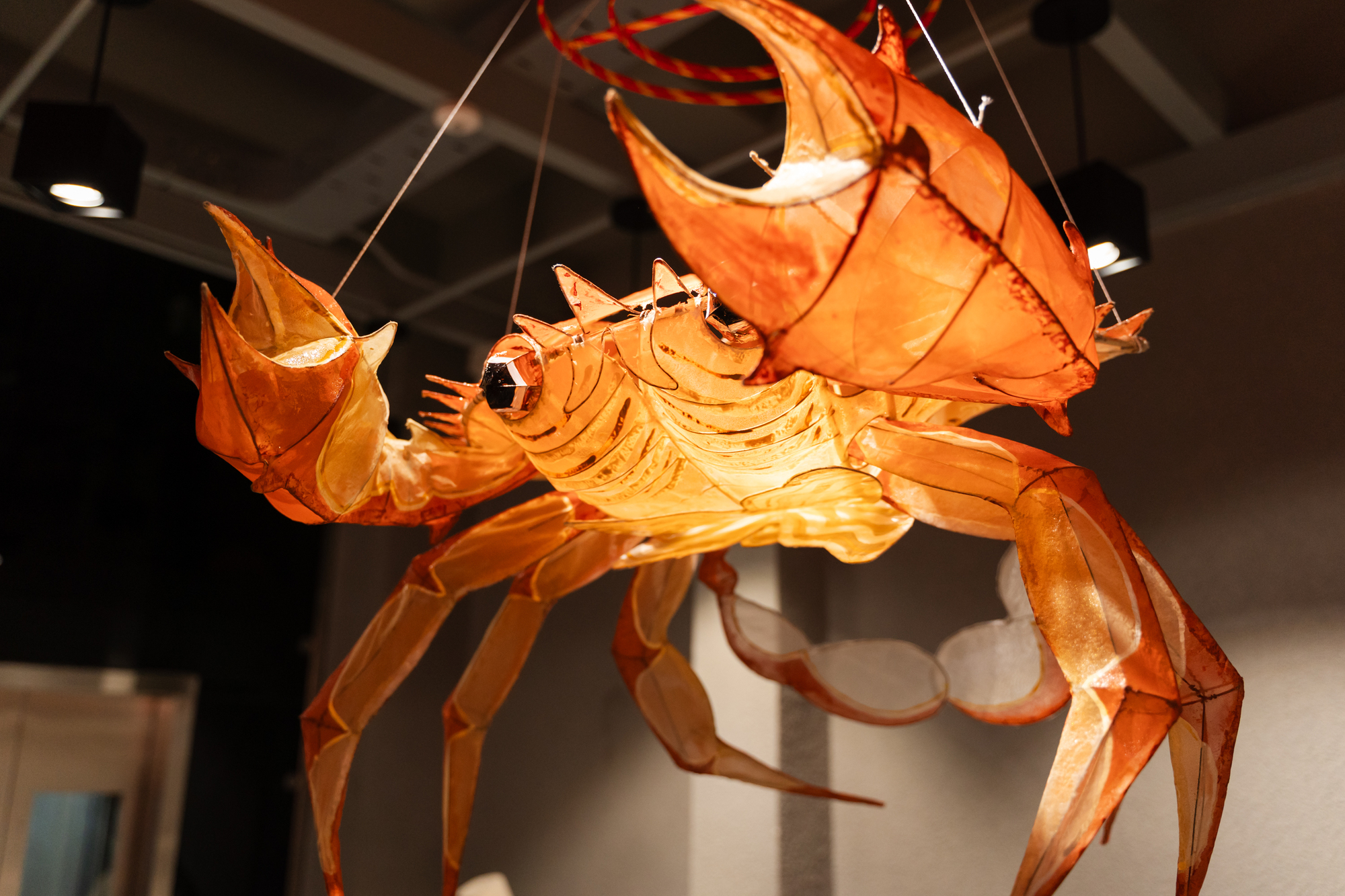
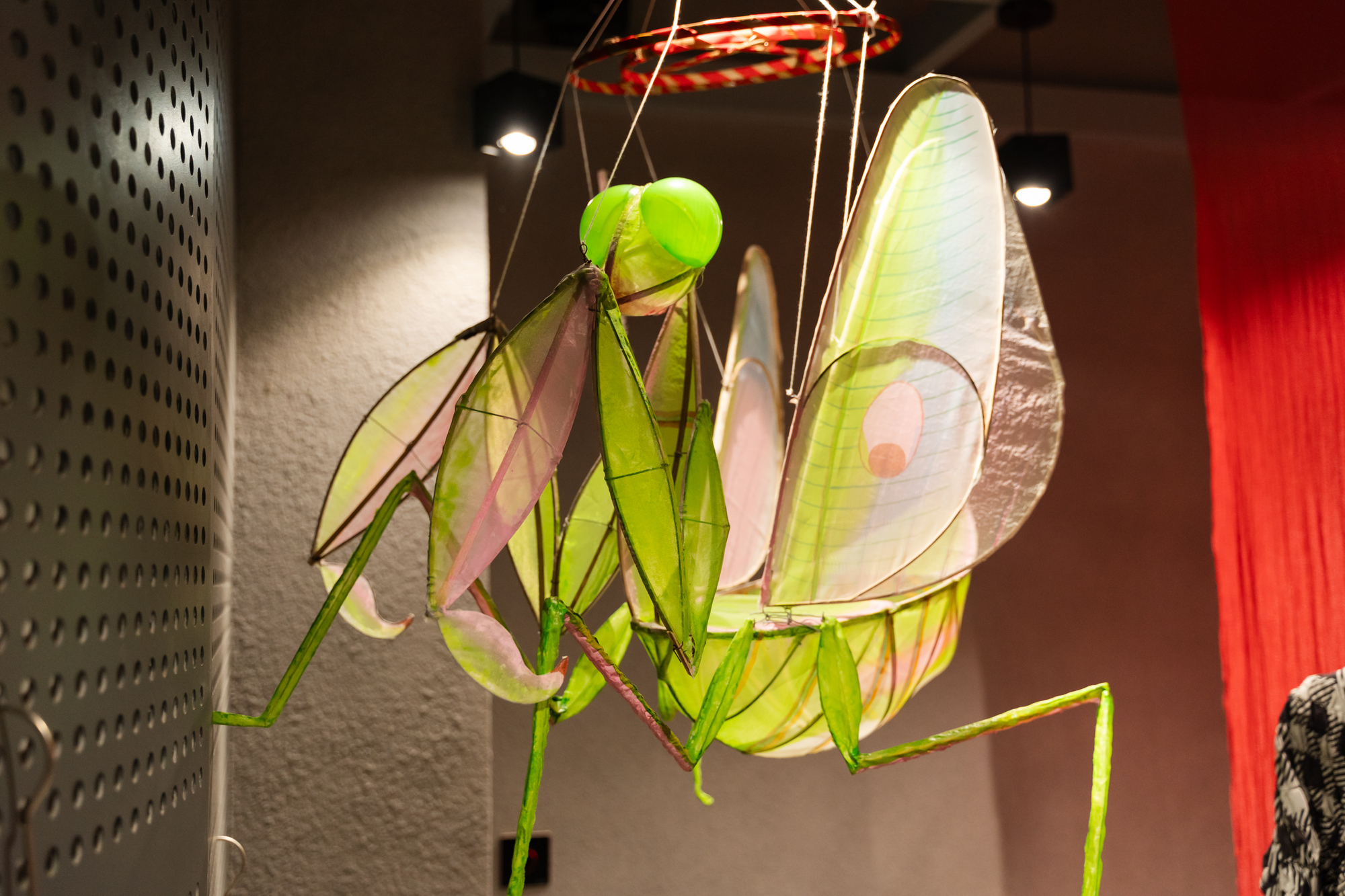
As an artisan, Binh understands which traditions must remain intact. “I create restorations so people can see the beauty of the craft in its original form,” he explains.
Still, he believes innovation is the way to long-term preservation. Pointing toward the ceiling of his workshop, he shows where restored lanterns hang side by side with his own contemporary creations. “You cannot only restore,” he says. “There must be something new. I want people to see that traditional lanterns can evolve to meet the present. The old and the new when placed together, make the innovation unmistakable.”
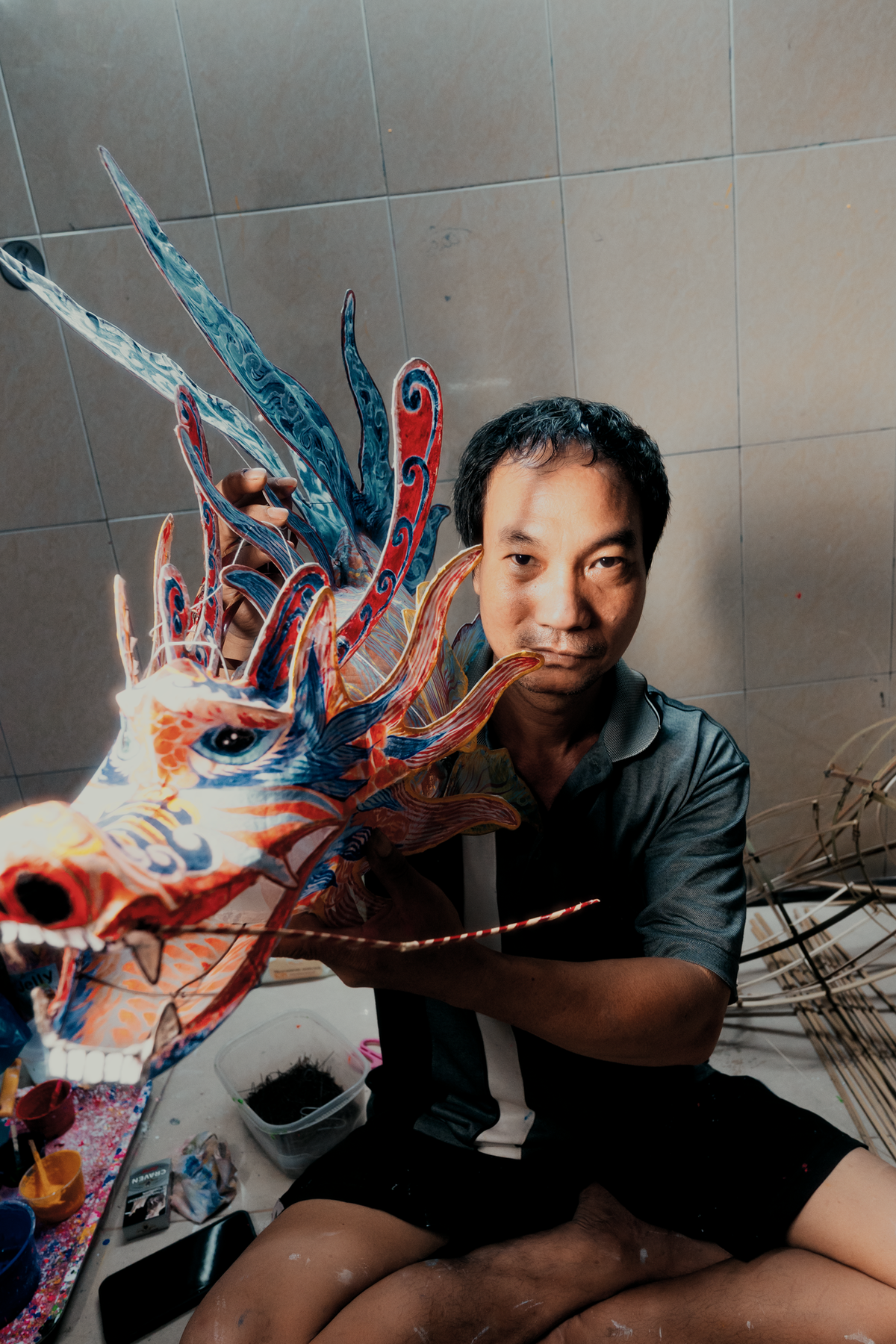
The future of this tradition depends on its ability to survive by adapting. Like mooncakes, reinvented each year with new flavors to meet contemporary tastes, lanterns, too, must evolve if they are to endure.
The devotion and persistence of artisans like Nguyen Trong Binh are invaluable. Yet cultural preservation cannot, and should not, rest on the shoulders of individuals alone. It demands the commitment of both the community and the state.
As cultural researcher Trinh Bach notes, Vietnam remains the only place where children’s Mid-Autumn lanterns take the form of animals.
Another Mid-Autumn arrives. And in Phu Binh, artisans work patiently on their final lanterns of the season—fish, rabbits, butterflies. These are made not only to light the festival night, but to keep alive the soul of a culture that might otherwise be forgotten. As the children’s song, sung for generations, reminds us:
"On Mid-Autumn night we take our lanterns out to play,
Lanterns glowing bright along the streets and alleyways.
With joy in our hearts and a lantern in hand,
We sing and we dance in the light of the moon.
Star lanterns, carp lanterns,
Swan lanterns, butterfly lanterns."
